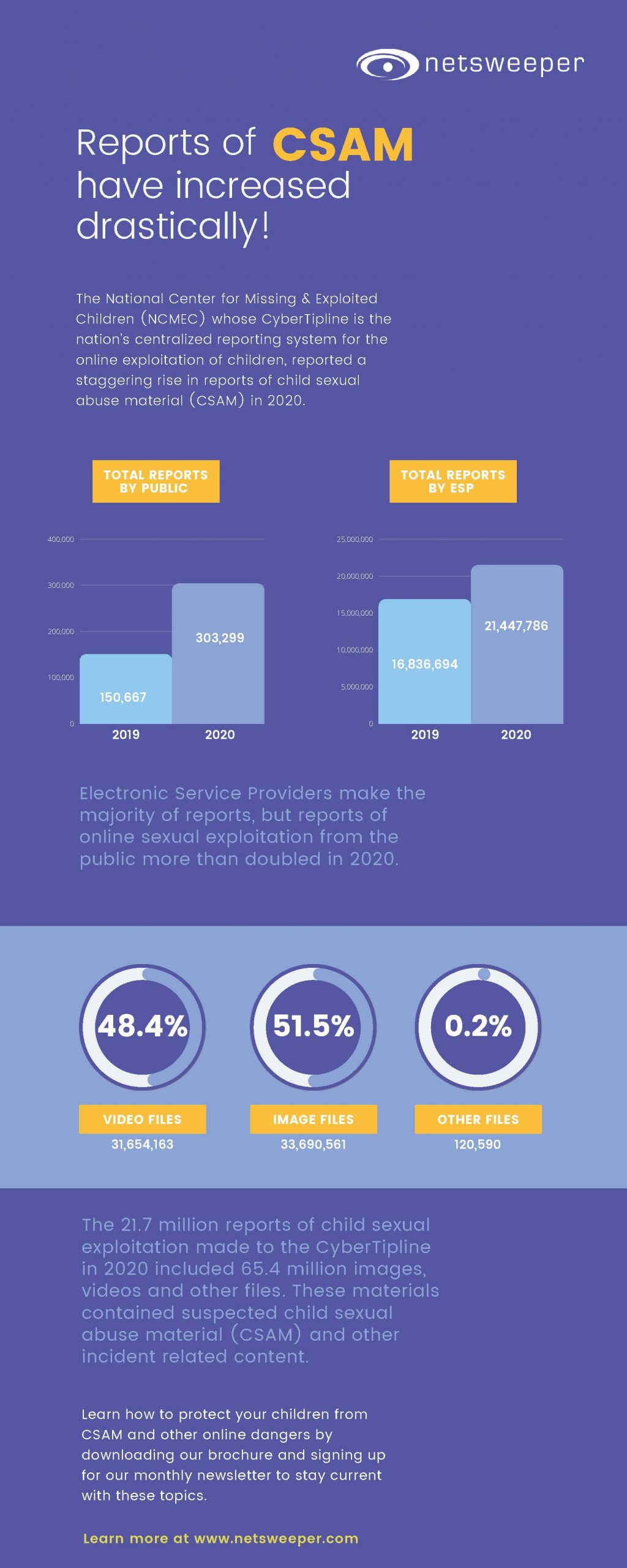Cases of online child sex abuse has continued to grow during the COVID-19 pandemic as families found themselves at home facing school closures and social distancing, resulting in their children spending more and more time on the internet. Although these drastic measures were necessary, it has led to an increase in unmonitored internet access, contributing to a greater risk of children and teens falling victim to online child abuse and exploitation.
Although no one is immune to this safety issue our society is facing today, many are noticing its severity and spike within recent years. According to a news article, the European Union’s Home Affairs Commissioner, Yvla Johansson, stated that internet service providers and social media firms had reported 22 million offenses related to child sexual abuse in 2020, up from 17 million in 2019. And if that wasn’t enough, Project Arachnid also released a report indicating that from 2018 to 2020, more than 5.4 million images of CSAM have been verified and detected to over 760 electronic service providers worldwide.
What Exactly is Child Sexual Abuse Material?
According to NCMEC, Child sexual abuse material (CSAM) is defined as images and videos that document victims’ exploitation and abuse. These files that are shared across the internet result in child victims suffering re-victimization each time the content of their sexual abuse is viewed. The internet has provided anonymous offenders with the opportunity to access, possess and trade child sexual abuse material with other offenders in any part of the world. According to a 2017 survey done by the Canadian Centre for Child Protection, 67% of CSAM survivors said the distribution of their images impacts them differently than the hands-on abuse they suffered because the distribution never ends, and the images are permanent.

The tech industry has failed to protect children from child abuse time and time again. It is evident that the internet and social media companies have put very little thought into the safety and privacy rights of children. What was once confined to the dark web is now easily accessible through a variety of sites and social media platforms. Google, Dropbox, Microsoft, Snapchat, TikTok, Twitter, and Verizon Media reported over 900,000 instances on their platforms, while Facebook reported that it removed nearly 5.4 million pieces of content related to child sexual abuse in the fourth quarter of 2020.
For more information or resources on CSAM and ways to protect your children, download our whitepaper and sign up for our monthly newsletter to stay current with our latest content. Don’t forget to check these out 👇👇👇
